Uncover Beaune's vibrant flavors and culinary gems with our expert guides. Plan an unforgettable trip now!
Read more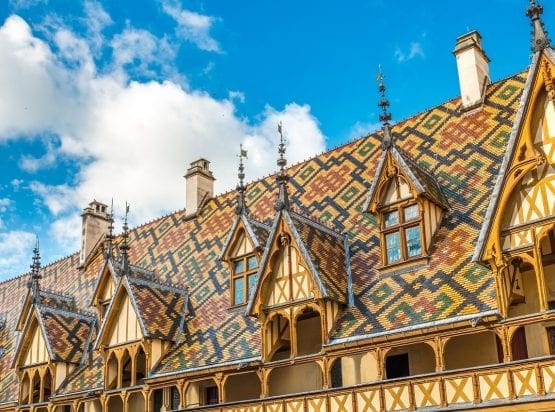
EXPLORE ALL OUR BURGUNDY WINE REGIONS GUIDE
Last updated: April 4, 2025
Few wine regions attract such fevered excitement as the Côte d’Or. The term refers to a legendary escarpment (long steep slope) in Burgundy, containing two of France’s most iconic vineyards: the Côte de Beaune and the Cote de Nuits. Collectors have long considered the Côte-d’Or the Valhalla of fine wine, where the world’s most expensive Pinot Noir and Chardonnay command prices that can make your eyes water.
Is it worth the considerable outlay, though? That is a topic of intense debate. However, there is no doubt that Corton, Montrachet, and Musigny are far more than simply varietal expressions of Burgundy’s two signature grapes.
Displaying a complexity and depth rarely seen elsewhere, these are “wines to drink on bended knees, with heartfelt and humble thanks.” Such a blend of poetry and wit could only have come from the late author Clive Coates MW, who understood that Grand Cru Burgundy, regardless of the price tag, has no equal in today’s world.
Discover More About French Wine
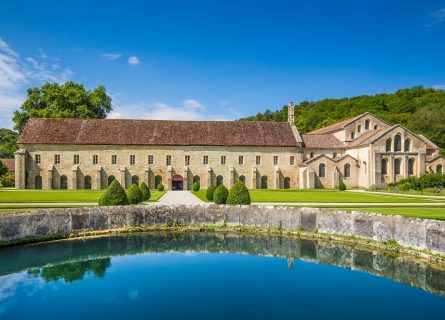
The ancient geology of the Côte d’Or has been the subject of intense fascination since the Middle Ages – certainly since the 12th century when Cistercian and Benedictine monks began an in-depth study of the soils and varying mesoclimates of this famous escarpment.
Yet, for many centuries, people have grown vines in Burgundy; Roman emperors promoted viticulture to thrive in this corner of central-eastern France, planting grape varieties to produce intensely sweet wines of incredible potency. This tradition continued until the 5th century when the Western Roman Empire fell victim to its own arrogance and overreach.
Monastic Viticulture Legacy
By the Middle Ages, the Catholic Church had organized and managed Burgundy’s most renowned vineyards, entrusting them to the monasteries that blanketed the Côte d’Or landscape. This geographical fault line, rich in soils of different ages and structures, became something of an obsession for the Cistercian and Benedictine monks of the period. They spent many hours studying and delineating this myriad of different terroirs, slopes, elevations, and aspects, attempting to understand what distinguished one climat (vineyard site) from another.
Celebrating and recognizing these differences became a fundamental part of the wine culture in Burgundy; this extensive ‘research’ was finally codified in the 19th century as a strict, almost inviolable hierarchy. It remains a model for other regions, not least Priorat and Barolo, who wish to follow in Burgundy’s footsteps.
Ducal Contributions to Grape Varieties
Meanwhile, in the 14th and 15th centuries, the Dukes of Burgundy did everything possible to encourage and profit from the area’s wines. Yet they had no love for the once prolific Gamay, which was ripped out of the Côte d’Or and replaced with Pinot Noir and Chardonnay.
Likewise, Pinot Blanc and Pinot Gris were historically a significant part of the local vignoble until Philip the Bold and Philip the Good saw fit to banish these inferior (as they believed) grapes from the region. Nonetheless, it was a golden age for the wines of Burgundy, as Europe’s aristocracy fell passionately in love with the flavors of Chambertin and Meursault.
Global Acclaim in the 18th Century
By the late 1700s, their renown had even caught the attention of US President Thomas Jefferson, who visited the Côte d’Or at the time of the French Revolution. This international cachet, rivaled only by the First Growths of Bordeaux, remains in full force today.
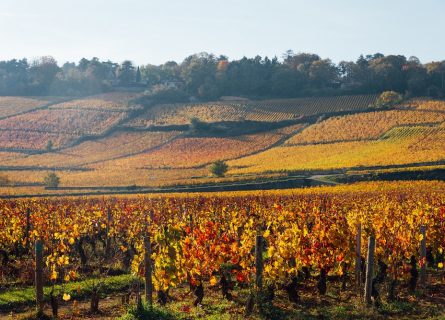
The Côte d’Or is one of the world’s foremost winegrowing areas, stretching from Dijon – bursting with Renaissance architecture – south to the wine hub of Beaune and beyond. Encompassing about 50 kilometers of vine-covered land, the term translates as “Golden Hillside” – a very appropriate name for the literally priceless vineyards of the Côte d’Or.
Soil Diversity and Its Impact on Wine Quality
Indeed, it is remarkable to think that the narrow, eastern slopes of this range of hills can yield such individual and memorable wine, and yet a vineyard less than 200 meters away will produce something quite different; huge variances in both quality and character are a fact of life in Burgundy.
These differences chiefly arise due to the multitude of soil types, aspects, and mesoclimates, including the stony limestone of Meursault and the marlstone of Corton.
Valley Floor
However, vineyards planted closer to the valley floor, where the soil is more alluvial, tend to produce higher yields (and weaker wines) due to the richer soil fertility.
Climate Change
Of course, climate also plays a vital role: Burgundy generally enjoys cold winters and warm summers. It used to be vital to harvest the Pinot Noir grapes before the cold and damp of fall set in. Yet global warming has upended that paradigm to a certain extent, as rising temperatures can lead to excess alcohol in extreme vintages like 2018.
However, it is generally agreed that the leading climats of the Côte d’Or face due east, sheltered from the worst extremes of rain and wind that can affect vineyards even in summer.
Côte de Nuits
Two distinct areas split the area under vine: the Côte de Nuits and the Côte de Beaune. The Côte de Nuits generally earns fame for its complex, elegant, and structured reds, whereas the Beaune gains recognition for its lighter reds and classic whites. The Côte de Nuits almost exclusively produces red wine.
Gevrey-Chambertin is one of the region’s most famous names and is the next stop on our journey. It boasts 26 Premier Crus, including the renowned Clos Saint-Jacques. The great chain of Grand Crus begins south of the village and runs almost to Vosne Romanée’s southern edge. Gevrey distinguishes itself from neighboring villages with its great power, concentration, and structure at any level.
Despite lacking the glamor of Gevrey and Chambolle, Morey-Saint-Denis proudly offers 20 Premier Crus and four Grand Crus.
Chambolle Musigny produces elegant, light Burgundy, and within its boundaries, the Grand Cru of Le Musigny stands unparalleled, expressing the elegant beauty of red Burgundy like no other.
Côte de Beaune
Meanwhile, the Côte de Beaune maintains a long-standing association with the world’s most sublime Chardonnay. Yet, it also encompasses very prestigious red wine villages, including Pommard and Volnay.
As we move south, we reach Meursault, one of the Côte d’Or’s three largest villages and the most significant white wine village. Some of Burgundy’s finest white wines are produced here—intense, stylish, and rich. While there are no Grand Crus, plenty of fine Premier Crus exist.
Next door, Puligny Montrachet arguably holds the title of the world’s most famous white wine village, often mentioned in the same sentence with ‘world’s best.’ The village is home to the Grand Crus of Chevalier-Montrachet and Le Montrachet. Le Montrachet is the most expensive and greatest white wine ever, boasting marvelous concentration, sublime proportions, and exquisite complexity.
Additionally, the village of Chassagne-Montrachet continues to host Grand Crus Le Montrachet and Batard Montrachet and adds the tiny 1.57-hectare Grand Cru of Criots-Batard-Montrachet.
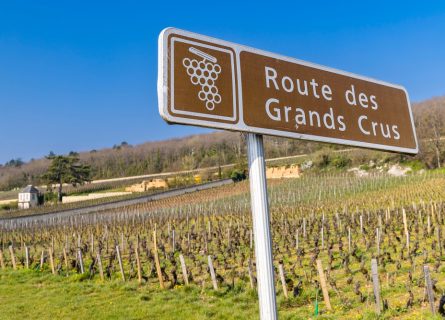
Terroir classification is paramount in the hallowed vineyards of the Côte d’Or. Indeed, individual promotions (growers have long argued that certain Pommard climats should be elevated to Grand Cru status) are only considered after a great body of evidence has been collected, and this process can take many years. Such is the reality of enforcing a hierarchy that dates back over 200 years, where vineyards are divided into four classes without exception.
Hierarchy of Burgundy Wines
At the bottom of the classification is the generic Bourgogne rouge/blanc designation, reserved for vineyards situated on inferior terroirs, often because they are too fertile for high-quality wine production.
This includes demarcated territories in the famous communes that flank the more exalted vineyards. Yet, if the winemaking is world-class, they can offer a genuine bargain in a region full of exorbitant wine.
Village Wines
The next tier is village wines, labeled with the name of a particular commune, such as Gevrey-Chambertin or Volnay. This classification covers vineyards that fall just below the Premier Cru category but can nonetheless make excellent—and excellent value—red and white wine.
However, the name of a specific, unclassified vineyard (lieu-dit to the Burgundians) can be printed on the front label, as long as it is in a smaller type than the village name.
Premier Cru and Grand Cru
Premier Crus, the next rank, are responsible for some of Burgundy’s most revered and sought-after wines. Of course, there is great variance in style and quality, which is unsurprising as there are over 600 registered vineyards in the Côte d’Or.
The most famous climats, including Puligny-Montrachet Folatières and Gevrey-Chambertin Clos St-Jacques, produce superlative wines that occasionally reach the dizzy heights of Grand Cru Burgundy.
There are just 32 Grand Cru appellations in the Côte d’Or, confined mainly to the Cote de Nuits. To put it mildly, we could dedicate an entire thesis to discussing these sacred terroirs’ various nuances and individual qualities.
However, the most crucial piece of information is straightforward to digest. These vineyards represent Pinot Noir and Chardonnay at their most profound, complex, and age-worthy. For that reason, collectors are prepared to pay almost any price for these venerable names.
Discover more about Burgundy Wine Classifications
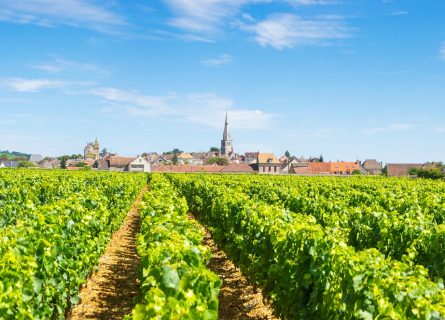
No word arouses quite so much passion – and debate – in Burgundy as the mere mention of “terroir.” Although there is no direct translation in English, Bruno Prats once described it as:
“the natural conditions which influence the biology of the vine-stock and thus the composition of the grape itself.”
He believed it was “the coming together of the climate, the soil, and the landscape.”
How these factors interact with each other can have a profound effect on what ends up in your glass. Indeed, Burgundy’s entire philosophy is built on the notion that vineyards are not a democracy and that one climat may be intrinsically inferior or superior to another.
Skepticism vs. Belief
Yet consumers can often express a certain skepticism about the entire concept, and not without good reason! After all, terroir can come across as nothing more than cynical marketing – an excuse to inflate the price and talk up the authenticity of your wine to a baffled audience. At best, it can come across as viticultural voodoo: the French expression goût de terroir (taste of terroir) has a nice and romantic ring to it.
But while there is no evidence that specific minerals in the soil will directly impact the wine’s flavor, it is unarguable that the Cote d’Or provides a myriad of different styles from just two signature grapes. How is this possible? It must surely be the terroir.
Empirical Evidence of Terroir’s Effect
The best way to test this assumption is to visit one of the region’s famous communes, where the magical combination of geology and geography and its effect on wine quality is difficult to refute. Visiting Meursault recently, I was given a tour of the appellation’s different vineyards; the finest Premier Crus are clustered together in the southern section of the zone, close to the border of Puligny-Montrachet.
Here, the soils are of Bathonian origin (Jurassic period limestone), with very thin top soils covered in rocky debris. This prevents roots from becoming waterlogged on the upper portions of the slope, while the limestone-rich soils yield wines (as Perrieres so aptly demonstrates) of incredible finesse and poise.
Meanwhile, the southeast-facing aspect ensures that vines receive the morning sun – this warms the ground and allows heat to build gradually during the day. However, when we visited the northern section of the zone, our guide revealed that the soils have a higher percentage of clay and pebbles; more suitable, he opined, for Pinot Noir. We tasted some high-quality village Meursault from this part of the appellation, and yet none of the wines showcased the complexity and elegance of the Premier Crus.
Terroir’s Tangible Impact on Wine Diversity
This terroir is most potent: when you can taste it in the wines. As the day wore on, it became harder and harder to dismiss these age-old claims made by French vignerons since time immemorial. The proof, as they say, was in the eating.
Chardonnay is a green-skinned grape varietal native to the Burgundy wine region in France and one of the most popular varieties worldwide.
Find out morePinot noir is a light-bodied red wine varietal closely related to the Vitis vinifera grape and produces the most sought-after red wines in the world.
Find out more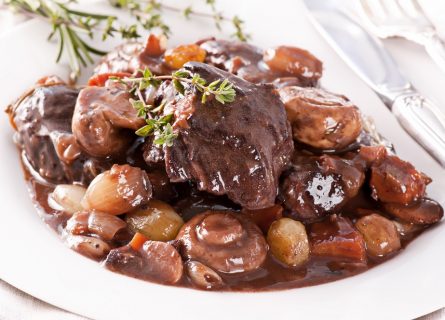
The Burgundians are (almost) as passionate about good food as they are dedicated to producing superlative wine. Fortunately, both these wonderful things are widely available in Dijon and Beaune, where medieval streets reveal a multitude of excellent bistros and high-end restaurants.
Beef, red wine, and mustard are three of Burgundy’s most famous ingredients, although the Dijon delicacy magret de canard au miel, thyme, et mirabelles (duck breast marinated in thyme, honey, and plum sauce) is possibly one of the most delicious meals we’ve ever enjoyed.
A Gastronomy Guide to the Cuisine of Burgundy: Read more

Uncover Beaune's vibrant flavors and culinary gems with our expert guides. Plan an unforgettable trip now!
Read more
Uncover Auxerre's vibrant flavors and culinary gems with our expert guides. Plan an unforgettable trip now!
Read more
Uncover Dijon's vibrant flavors and culinary gems with our expert guides. Plan an unforgettable trip now!
Read moreIf you would like us to customize an exclusive luxury tour, contact us and let us know your travel plans. We offer luxury food and wine tours for private groups of a mininium two guests. In addition, all of our private, chauffeured tours are available year-round upon request.

